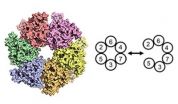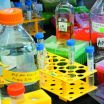(Press-News.org) In this month's issue of Physics World, Ashley Dale from the University of Bristol warns of the "catastrophic" and "long-lasting" impacts of "solar super-storms" and the dangers we face if the threat continues to go unnoticed.
Dale, who was a member of an international task force – dubbed SolarMAX – set up to identify the risks of a solar storm and how its impact could be minimized, explains how it is only a matter of time before an exceptionally violent solar storm is propelled towards Earth. Such a storm would wreak havoc with our communication systems and power supplies, crippling vital services such as transport, sanitation and medicine.
"Without power, people would struggle to fuel their cars at petrol stations, get money from cash dispensers or pay online. Water and sewage systems would be affected too, meaning that health epidemics in urbanized areas would quickly take a grip, with diseases we thought we had left behind centuries ago soon returning," Dale writes.
Solar storms are caused by violent eruptions on the surface of the Sun and are accompanied by coronal mass ejections (CME). CMEs are the most energetic events in our solar system and involve huge bubbles of plasma and magnetic fields being spewed from the Sun's surface into space.
CMEs are often preceded by a solar flare – a massive release of energy from the Sun in the form of gamma rays, X-rays, protons and electrons.
A solar super-storm occurs when a CME of sufficient magnitude tears into the Earth's surrounding magnetic field and rips it apart. Such an event would induce huge surges of electrical currents in the ground and in overhead transmission lines, causing widespread power outages and severely damaging critical electrical components.
The largest ever solar super-storm on record occurred in 1859 and is known as the Carrington Event, named after the English astronomer Richard Carrington who spotted the preceding solar flare.
This massive CME released about 1022 kJ of energy – the equivalent to 10 billion Hiroshima bombs exploding at the same time – and hurled around a trillion kilograms of charged particles towards the Earth at speeds of up to 3000 km/s. Its impact on the human population, though, was relatively benign as our electronic infrastructure at the time amounted to no more than about 200 000 km of telegraph lines.
Dale makes it clear that these types of events are not just a threat, but inevitable. Indeed, NASA scientists have predicted that the Earth is in the path of a Carrington-level event every 150 years on average – which means that we are currently five years overdue – and that the likelihood of one occurring in the next decade is as high as 12%.
The 40-strong international team of scientists from SolarMAX gathered at the International Space University in Strasbourg, France, last year to identify the best ways of limiting the potential damage of a solar super-storm.
A sub-group of scientists concluded that advanced space-weather forecasting is the best solution, which could be achieved by sending an array of 16 lunchbox-sized cube satellites into orbit around the Sun. This network could give around a week's notice of where, when and with what magnitude solar storms will take place, providing adequate time to switch off vulnerable power lines, re-orientate satellites, ground planes and begin national recovery programmes.
Dale's own solution is to design spacecraft and satellites so that the sensitive, on-board instruments are better protected again sudden increases in radiation from solar storms. He suggests redistributing the existing internal architecture of a craft so that sensitive payloads are surrounded by non-sensitive bulk material such as polyethylene, aluminium and water.
"As a species, we have never been more vulnerable to the volatile mood of our nearest star, but it is well within our ability, skill and expertise as humans to protect ourselves," Dale concludes.
INFORMATION:
Also in this issue:
Aping our ancestors – do apes "know" physics?
Suspicious sounds – how optical fibres can sense intruders
Please mention Physics World as the source of these items and, if publishing online, please include a hyperlink to: http://physicsworld.com
Notes for editors:
1. Physics World is the international monthly magazine published by the Institute of Physics. For further information or details of its editorial programme, please contact the editor, Dr Matin Durrani, tel +44 (0)117 930 1002. The magazine's website physicsworld.com is updated regularly and contains daily physics news and regular audio and video content. Visit http://physicsworld.com.
2. For copies of the articles reviewed here contact Mike Bishop, IOP press officer, tel +44 (0)11 7930 1032, e-mail michael.bishop@iop.org
3. The Institute of Physics is a leading scientific society. We are a charitable organisation with a worldwide membership of more than 50,000, working together to advance physics education, research and application.
We engage with policymakers and the general public to develop awareness and understanding of the value of physics and, through IOP Publishing, we are world leaders in professional scientific communications.
In September 2013, we launched our first fundraising campaign. Our campaign, Opportunity Physics, offers you the chance to support the work that we do.
Scientist underlines threat of inevitable 'solar super-storms'
2014-08-01
ELSE PRESS RELEASES FROM THIS DATE:
Harmful drinkers would be affected 200 times more than low risk drinkers with an MUP
2014-08-01
A new study of liver patients by the University of Southampton shows that a Minimum Unit Price (MUP) policy for alcohol is exquisitely targeted towards the heaviest drinkers with cirrhosis.
Published today in Clinical Medicine, the peer review journal for the Royal College of Physicians, the researchers studied the amount and type of alcohol drunk by 404 liver patients, and also asked patients how much they paid for alcohol. They found that patients with alcohol related cirrhosis were drinking on average the equivalent of four bottles of vodka each week, and were buying ...
Depressive symptoms and pain may affect health outcomes in dialysis patients
2014-08-01
Washington, DC (July 31, 2014) — Depressive symptoms and pain in patients on dialysis may have serious negative consequences for patients' health and increase the need for costly medical services, according to a study appearing in an upcoming issue of the Clinical Journal of the American Society of Nephrology (CJASN). The findings indicate that studies should evaluate the potential of anti-depressant and analgesic therapies to improve patient outcomes and reduce costs.
Depressive symptoms and pain are common in kidney failure patients receiving chronic hemodialysis, but ...
Molecular gate that could keep cancer cells locked up
2014-08-01
In a study published today in Genes & Development, Dr Christian Speck from the MRC Clinical Sciences Centre's DNA Replication group, in collaboration with Brookhaven National Laboratory (BNL), New York, reveal the intricate mechanisms involved in the enzyme that governs DNA duplication during cell division. By developing a sophisticated system using synthetic, chemical and structural biology approaches, the study reveals how a key enzyme involved in duplicating genetic information embraces DNA through a gated system, which opens up at precise positions allowing for a highly ...
SwRI-led team's research shows giant asteroids battered early Earth
2014-08-01
San Antonio — July 31, 2014 — A new terrestrial bombardment model developed by an international group of scientists led by Southwest Research Institute (SwRI) indicates that Earth's surface was heavily reprocessed — or melted, mixed and buried — as a result of giant asteroid impacts more than four billion years ago.
The model, calibrated using existing lunar and terrestrial data, sheds light on the role asteroid collisions played in the geological evolution of the uppermost layers of Earth during the geologic eon call the "Hadean," or first geologic eon, approximately ...
Blood and saliva tests help predict return of HPV-linked oral cancers
2014-07-31
Physicians at Johns Hopkins have developed blood and saliva tests that help accurately predict recurrences of HPV-linked oral cancers in a substantial number of patients. The tests screen for DNA fragments of the human papillomavirus (HPV) shed from cancer cells lingering in the mouth or other parts of the body. A description of the development is published in the July 31 issue of JAMA Otolaryngology – Head & Neck Surgery.
"There is a window of opportunity in the year after initial therapy to take an aggressive approach to spotting recurrences and intensively addressing ...
Study of twins discovers gene mutation linked to short sleep duration
2014-07-31
DARIEN, IL – Researchers who studied 100 twin pairs have identified a gene mutation that may allow the carrier to function normally on less than six hours of sleep per night. The genetic variant also appears to provide greater resistance to the effects of sleep deprivation.
Results show that a participant with p.Tyr362His – a variant of the BHLHE41 gene – had an average nightly sleep duration of only five hours, which was more than one hour shorter than the non-carrier twin, who slept for about six hours and five minutes per night. The twin with the gene mutation also ...
Sustained efficacy, immunogenicity, and safety for GlaxoSmithKline's HPV vaccine
2014-07-31
A long-term follow-up study (HPV-023; NCT00518336) shows the sustained efficacy, immunogenicity and safety of GlaxoSmithKline's human papilloma virus (HPV) vaccine Cervarix. Women vaccinated with the HPV-16/18 AS04-adjuvanted vaccine were followed for more than nine years, and vaccine efficacy (VE) against incident infection was 100%. This is the longest follow-up report for a licensed HPV vaccine. Visit https://www.landesbioscience.com/journals/vaccines/article/29532/ for the full paper.
HPV and vaccination
Persistent infection with HPV has been clearly established ...
Algorithm reduces use of CT scans when diagnosing children with appendicitis
2014-07-31
ROCHESTER, Minn. — Implementation of an algorithm aimed to diagnose pediatric patients with suspected appendicitis reduces the utilization of computed tomography (CT) scans, without affecting diagnostic accuracy, Mayo Clinic Children's Center researchers have found. The study was recently published in the journal Surgery.
Acute appendicitis is the most common cause of acute abdominal pain in children. Appendicitis occurs when the appendix becomes inflamed and filled with pus. CT scans are often used to diagnose acute appendicitis because they are accurate, widely available ...
Study of bigeye tuna in Northwest Atlantic uses new tracking methods
2014-07-31
AMHERST, Mass. – A first-of-its-kind study of bigeye tuna movements in the northwestern Atlantic Ocean led by Molly Lutcavage, director of the Large Pelagics Research Center at the University of Massachusetts Amherst, found among other things that these fish cover a wide geographical range with pronounced north-south movements from Georges Bank to the Brazilian shelf, and they favor a high-use area off Cape Hatteras southwest of Bermuda for foraging.
This NOAA-funded research, which used a new approach to study one of the most important commercial tuna species in the ...
Unintended consequences: More high school math, science linked to more dropouts
2014-07-31
As U.S. high schools beef up math and science requirements for graduation, researchers at Washington University in St. Louis have found that more rigorous academics drive some students to drop out.
The research team reported in the June/July issue of the journal Educational Researcher that policies increasing the number of required high school math and science courses are linked to higher dropout rates.
"There's been a movement to make education in the United States compare more favorably to education in the rest of the world, and part of that has involved increasing ...


